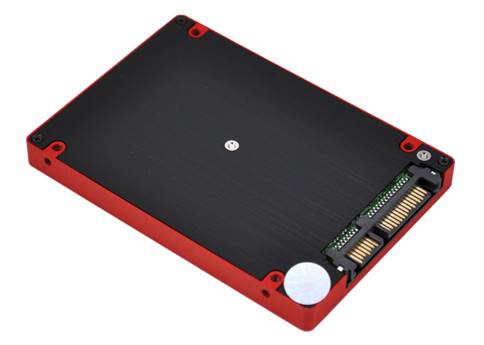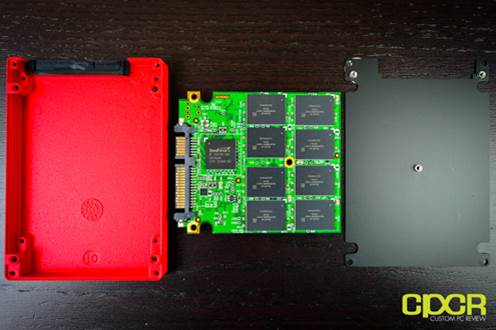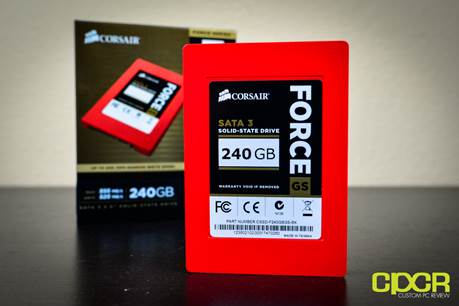This attractive, midrange, consumer SSD is
blessed with Toggle-Mode NAND, a strain of double data rate MLC flash memory
originally developed by Toshiba. Toggle NAND, as Corsair well knows, has become
a favorite among SSD shoppers looking for top performance.

Corsair
Force Series GS 240GB
The controller responsible for all of the
I/O flowing through the Force GS is the SandForce SF-2200. This standby of the
SSD scene seems as familiar as an old friend by now, but it doesn’t have the
novelty cachet of newer controllers such as the OCZ/Indilinx Barefoot 3 in the
OCZ Vector or the Link_A_Media Devices controller in Corsair’s own Neutron and
Neutron GTX. That said, it’s a mature, well-patched chip with no surprises in
store highly desirable attributes in a storage controller that will be
responsible for your data.

Performance-wise,
the Force GS is pretty competitive for its price.
Corsair se 11s the Force GS in capacities
of 128GB, 180GB, 240GB, 360GB, and 480GB. With the exception of the smallest
two drives, all of the above SSDs have retail prices of less than $1 per
gigabyte.
Performance-wise, the Force GS is pretty
competitive for its price. Being a Sand Force-based SSD, it really starts to
strut its stuff when it comes to reading and writing compressible data, as you
can see in the middle of our benchmark results (Crystal Disk Mark’s All 0x00 [0
Fill] tests). Even when we fed it incompressible bits and bytes, such as video
and audio files, the drive held its own among similar company.

So how does the Force GS compare with
Corsair’s other SSDs in the Force series? All use Sand Force memory
controllers, but that’s where the internal similarities end.
Well, the Force GT, as you may know, makes
use of synchronous MLC NAND as opposed to the Toggle NAND of the Force GS. In
its 240GB variant ($224.99), the Force GT logs advertised sequential read
speeds of up to 555MBps. It performs sequential writes at up to 525MBps, and
aligned writes of 4KB files at up to 85,000IOPS.

The
Force GT logs advertised sequential read speeds of up to 555mbps
Power users often feel more affinity toward
a particular controller or type of flash memory than to a certain brand, which
is why manufacturers such as Corsair field SSDs with varying blends of the two.
In the case of the Force GS, it adds up to solid performance at a great price.
|
Info
§ Price:
$229.99
§ Manufacturer:
Corsair
§ Website:
www.corsair.com
Specs
§ Maximum
sequential read/ write: 555MBps/525MBps;
§ Maximum
random 4K write: 90,000IC)PS (4K aligned);
§ Interface:
6Gbps SATA;
§ Three-year
warranty
Test system specs
§ CPU:
Intel Core \1-3570K;
§ Motherboard:
GA-Z77X-UD4H;
§ GPU:
ZOTAC GeForce GTX 580 (2x, SLI);
§ RAM:
4GB Crucial DDR3-1333;
§ Storage:
128GB Crucial RealSSD C300;
§ OS:
Windows 7 Enterprise (64-bit)
|